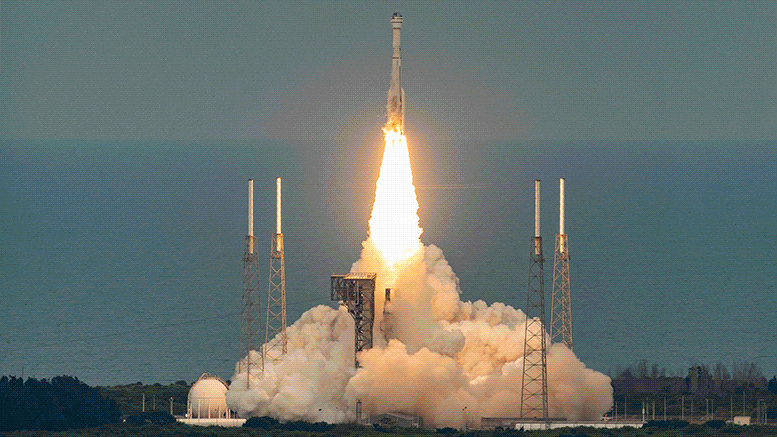
The next commercial crew test mission to the space station …
Outlining the agency’s objectives for deep space exploration ….
And covering the total lunar eclipse on Earth and from space … a few of the stories to tell you about – This Week at NASA!
Uncrewed Commercial Test Mission Launches to the Space Station
On May 19, Boeing’s CST-100 Starliner spacecraft launched from Cape Canaveral Space Force Station in Florida on Orbital Flight Test-2 or OFT-2. The mission is the Starliner’s second uncrewed flight to the station for our Commercial Crew Program.
NASA Outlines Moon to Mars Objectives
On May 17, NASA released a draft set of high-level objectives identifying 50 points that fall under four overarching categories of exploration for future Artemis missions to return astronauts to the Moon in preparation for human exploration of Mars. The agency is asking U.S. industry, academia, international communities, and other stakeholders to provide input on these deep space exploration objectives. Learn more at nasa.gov/moontomars.

A telescopic visualization of the total lunar eclipse, happening May 15-16, 2022. Credit: NASA/Goddard/Ernie Wright
NASA Covers Total Lunar Eclipse
The latest episode of our NASA Science Live was all about the total lunar eclipse on the evening of May 15, overnight into May 16. It featured NASA experts and live views of the eclipse from around the world. Meanwhile, our Lucy spacecraft captured the imagery of the eclipse seen in this time-lapse when the traveling spacecraft was about 64 million miles from Earth. It shows Earth on the left and the Moon on the right, which can be seen disappearing into darkness as it passes through Earth’s shadow. The Lucy spacecraft is on its way to study Jupiter’s Trojan asteroids.

This illustration shows NASA’s Mars InSight lander on the Martian surface. Credit: NASA
InSight Still Hunting Marsquakes as Power Levels Diminish
Dust on the solar panels of our InSight Mars lander is causing the spacecraft to gradually lose power. As a result, the InSight team anticipates that the lander will become inoperative by the end of this year. InSight, which arrived at Mars in November 2018, has so far detected more than 1,300 marsquakes and collected information to help improve our understanding of the interiors of rocky planets, including Earth.

Inside NASA’s Cold Atom Lab, scientists form bubbles from ultracold gas, shown in pink in this illustration. Lasers, also depicted, are used to cool the atoms, while an atom chip, illustrated in gray, generates magnetic fields to manipulate their shape, in combination with radio waves. Credit: NASA/JPL-Caltech
Ultracold Bubbles on Space Station Open New Paths for Quantum Research
NASA’s Cold Atom Lab, the first-ever quantum physics facility aboard the International Space Station, has been used to shape atoms of gas cooled to nearly absolute zero – or about minus 459 degrees Fahrenheit – into extremely thin, hollow spheres. This is similar to how liquids behave in microgravity and can’t be duplicated on Earth. The accomplishment could lead to new kinds of experiments with a state of matter distinctly different from gases, liquids, solids, and plasmas, called a Bose-Einstein condensate or BEC. In a BEC, scientists can observe the quantum properties of atoms at a scale visible to the naked eye.

Lockheed Martin X-59 QueSST. Credit: Lockheed Martin
New Name for NASA’s Supersonic X-Plane Mission
Our research mission to enable supersonic air travel over land has been renamed Quesst. The name, which includes an extra “s” to represent “supersonic,” replaces the mission’s original name: The Low-Boom Flight Demonstration. Through Quesst, NASA plans to demonstrate that the X-59 research aircraft can fly faster than sound without generating the loud sonic booms supersonic aircraft typically produce.
That’s what’s up this week @NASA …
